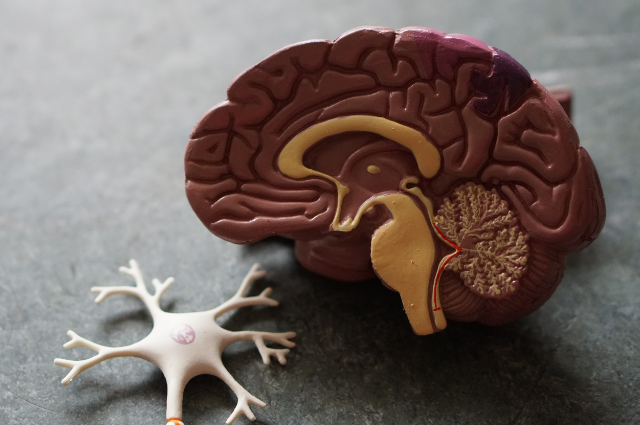
Photo by Robina Weermeijer on Unsplash
Abstract:
Carbon monoxide (CO) is a colorless, odorless, and tasteless gas produced by incomplete combustion of carbon-containing materials. Its toxic effects on the human body, particularly the brain, are a significant concern due to its widespread availability and potential for accidental exposure. This abstract aims to summarize the current understanding of carbon monoxide toxicity and its reversible damage to the brain.
Upon inhalation, carbon monoxide readily binds to hemoglobin, forming carboxyhemoglobin, reducing oxygen-carrying capacity and impairing oxygen delivery to vital organs, including the brain. The brain is highly susceptible to CO toxicity due to its high oxygen demand and rich vascular supply. Acute exposure to high levels of CO can lead to neurological symptoms such as headache, dizziness, confusion, and loss of consciousness. Prolonged exposure or exposure to lower concentrations may result in subtle cognitive impairments, memory deficits, and behavioral changes.
While carbon monoxide toxicity can cause severe and potentially irreversible brain damage, timely intervention and removal of the source of exposure can lead to a significant degree of reversibility. Prompt administration of 100% oxygen through non-rebreather masks or hyperbaric oxygen therapy (HBOT) can aid in eliminating carbon monoxide from the body and restoring oxygenation to affected tissues, including the brain. Studies have shown that early initiation of HBOT can improve neurological outcomes and enhance the recovery process.
1. Carbon Monoxide Poisoning
- Explain the sources of carbon monoxide, such as car exhaust, faulty heating systems, and tobacco smoke.
- Discuss how carbon monoxide enters the body through inhalation and its affinity for binding to hemoglobin, reducing oxygen-carrying capacity.
2. Mechanisms of Brain Damage
- Describe the mechanisms by which carbon monoxide affects the brain.
- Emphasize the binding affinity of carbon monoxide to myoglobin, cytochrome oxidase, and other heme-containing proteins, disrupting cellular respiration and energy production.
3. Reversible Damage to the Brain
- Present evidence indicating that carbon monoxide-induced brain damage can be reversible under certain circumstances.
- Discuss studies demonstrating the potential for functional and structural recovery in individuals after carbon monoxide poisoning.
4. Clinical Manifestations
- Outline the clinical manifestations of carbon monoxide toxicity on the brain.
- Discuss acute symptoms such as headache, dizziness, confusion, and loss of consciousness.
5. Diagnostic Evaluation
- Present the diagnostic methods used to assess carbon monoxide poisoning and its impact on the brain.
- Explain the use of blood carboxyhemoglobin levels as an indicator of exposure.
6. Prevention and Public Awareness
- Highlight the importance of carbon monoxide prevention measures, such as proper ventilation, regular maintenance of heating systems, and installation of carbon monoxide detectors.
- Discuss the need for public awareness campaigns to educate individuals about the dangers of carbon monoxide and the importance of early detection.
Conclusion
Carbon monoxide toxicity poses a significant threat to brain health due to its affinity for binding to vital proteins involved in cellular respiration. However, the reversible nature of carbon monoxide-induced brain damage offers hope for recovery, especially with prompt diagnosis and appropriate treatment. Public awareness, prevention measures, and timely intervention are crucial in reducing the burden of carbon monoxide poisoning on brain function and overall well-being.
- Acknowledgment: I would like to express my special thanks of gratitude to the IPC committee for giving a big opportunity and support to the abstract on my topic Carbon Monoxide Toxicity: Reversible Damage to the Brain in this article.
- References:
1. American Journal of Respiratory and Critical Care Medicine: This journal often publishes research related to respiratory diseases and toxicology, including carbon monoxide poisoning. Browsing their archives or using their search function (https://www.atsjournals.org/action/doSearch) with relevant keywords could yield relevant papers.
2. Centers for Disease Control and Prevention (CDC): The CDC provides information on carbon monoxide poisoning, its symptoms, and its long-term effects. Their website (https://www.cdc.gov/co/default.htm) contains resources that may help you find relevant references. - Authors: I am Aayush Raj Dubey.I pursuing a bachelor's degree in Pharmaceutical Sciences from G.S.R.M Memorial College of Pharmacy 720 Mohan Road, Bhadoi - 226008 affiliated with A.P.J Abdul Kalam Technical University,Lucknow. I am really interested in Pharmacology for understanding Pharmacokinetics, Pharmacodynamics related problems.
- Co-authors: I would like to express my sincere gratitude to Anamika Sharma for their invaluable contributions to this article. Their insights, expertise, and dedication greatly enriched the content and overall quality of the work. This collaborative effort wouldn't have been possible without her active involvement and thoughtful input. Anamika is my classmate. She pursuing bachelor's degree in Pharmacy from G.S.R.M Memorial College of Pharmacy 720 Mohan Road, Bhadoi - 226008 affiliated with A.P.J Abdul Kalam Technical University,Lucknow. She is interested in the field of Medicinal Chemistry which is combines aspects of chemistry, biology, and Pharmacology to design, develop, and optimize new pharmaceutical compounds (drugs) for therapeutic use.
